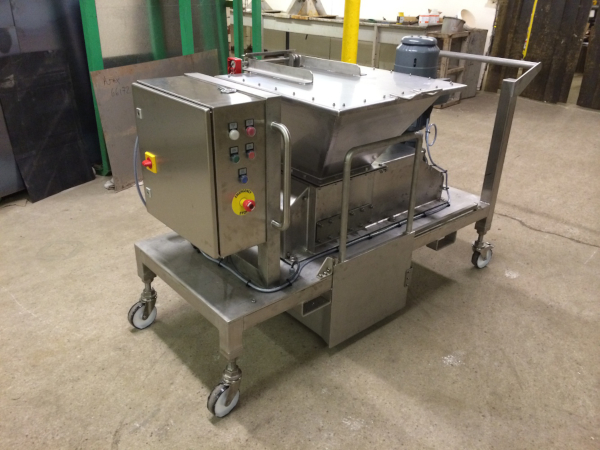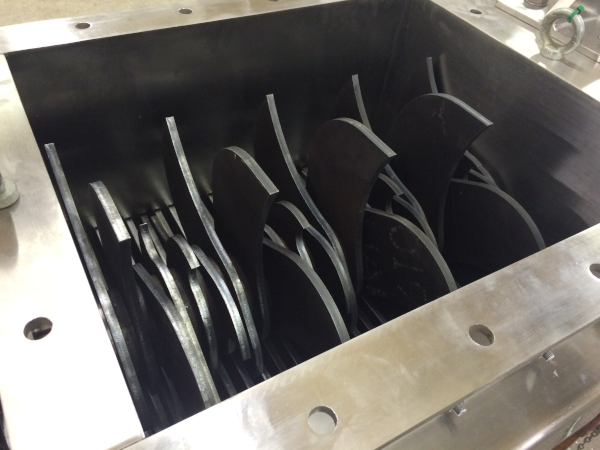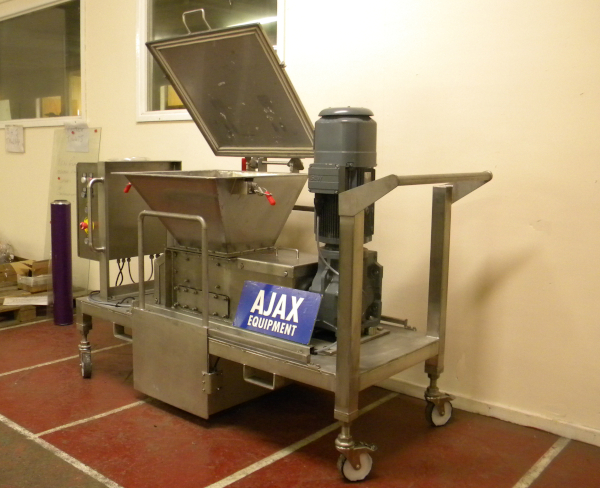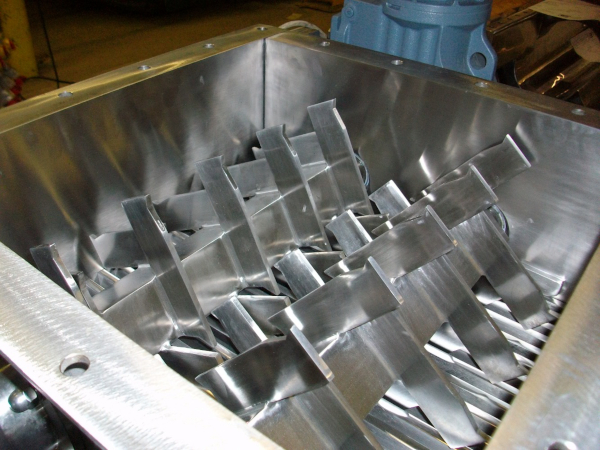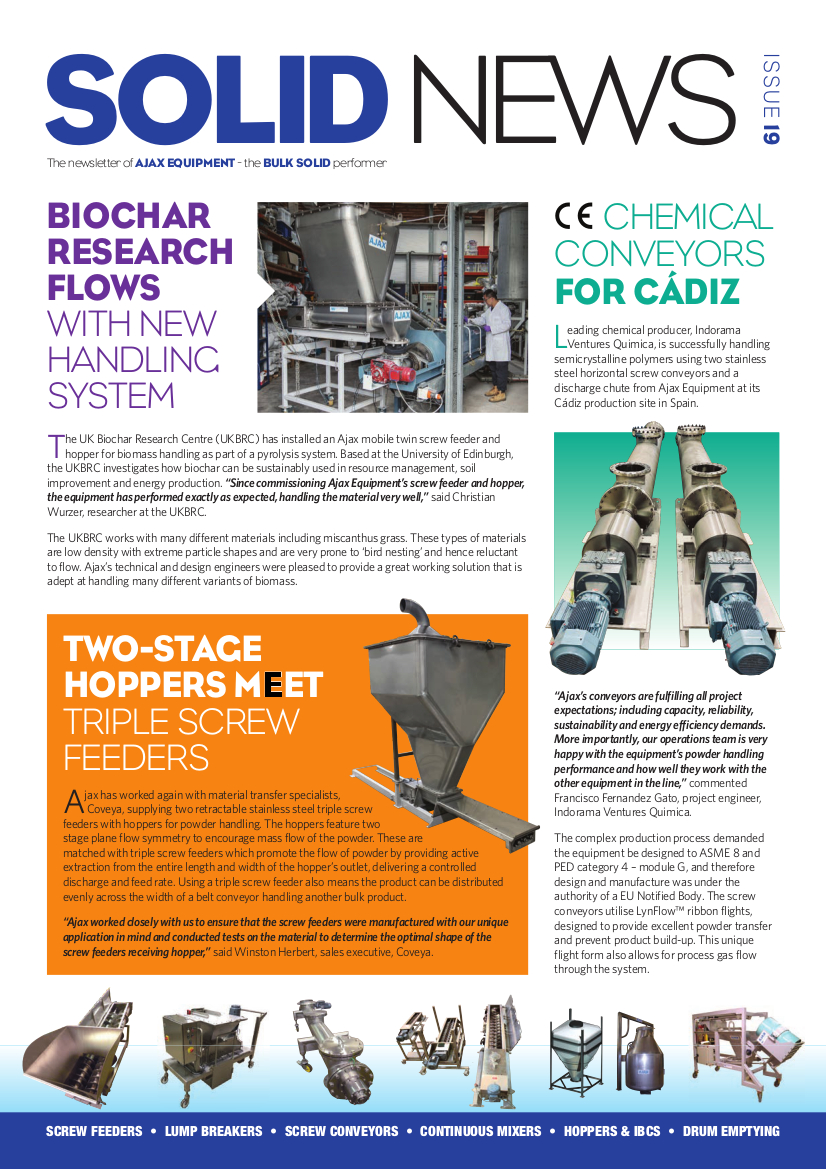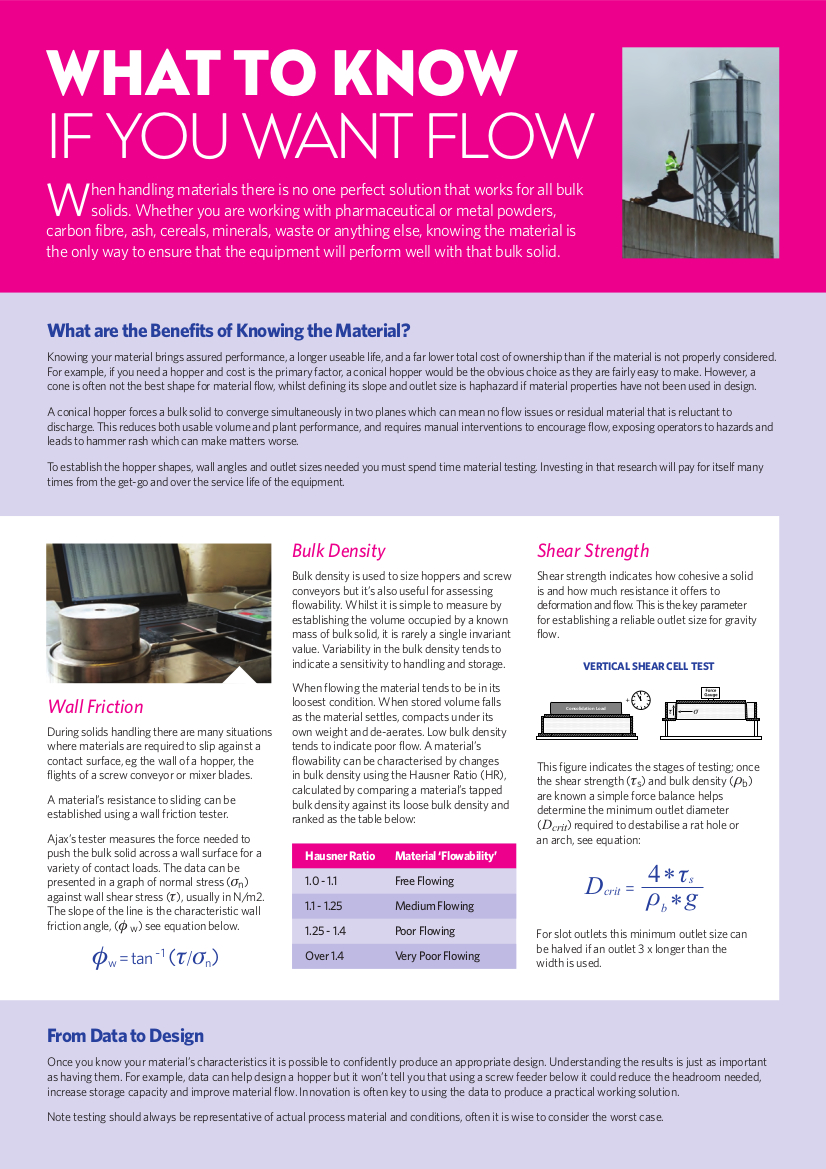Lump Breakers as Pre-Breakers
Lump Breakers for Pre-Processing
Size reduction is a common feature of the chemical, pharmaceutical food, mining and quarrying industries; from recycling polymers to preparing raw sugar for processing through to meeting stringent quality and particle size requirements for active pharmaceutical ingredients. .
For some ingredients, size reduction may be little more than breaking down lumps to prevent damage to mixer paddles and blockage of hoppers and feed chutes. It also increases the surface area of the material and produces a more consistent particle size that, even within the broad parameters of the lump breaker, allows greater control and predictability of reaction rates. .
Size reduction is achieved using one or more methods such as: impact, compression and shear. The technique(s) used will depend on the materials. A lump breaker, for example, uses impact and shear to gently crush brittle products that require breaking down without the generation of excessive dust and fines. The skill comes in breaking the lumps down without overworking the material. Heat or work sensitive granules, such as resins, are best fractured and reduced to smaller pieces by a powerful low-speed crushing, without the violent shattering and disintegration that accompanies the more dynamic action of high impact speeds. A higher proportion of granules are created in the upper size range determined by the grill, and less fines. .
High speed lump breakers or pre breakers are more destructive of the granular materials, combining the effect of impact, wedging and trapping at a rapid rate, to fracture the chunks into a wide range of particulate fractions, none larger than will pass through the grid. .
Typically a lump breaker or pre breaker comprises single or twin shaft arrangements. Single shaft machines satisfy most simple applications. The twin shafts machines contra-rotate, to draw lumps into the central breaking zone, providing a self cleaning action, thereby permitting the breaker to smash larger and denser lumps without bridging or clogging. The blade fixings are radially offset to the square centre shaft in order to develop progressive sliding contact forces and provide a strong mechanical fixture of the blades by virtue of utilising the shear strength, rather than tensile strength of the connection. .
During the manufacturing processes, size reduction is primarily driven by handling, processing and product quality considerations, whereas milling is used to generate precise particle sizes. Pre-breaking This has the benefit of securing improved and predictable reaction rates, flowability and consistent bulk density. For highly potent compounds, it also ensures that precise portions can be dispensed more easily for further processing. .
Milling
Unlike lump breaking, milling usually achieves size reduction via particle to particle collision. Milling is most frequently used where particle sizes of 1 mm or less are needed and so detailed knowledge of the material's physical properties is critical. Material hardness, abrasiveness, moisture content and bulk can give an insight into the likely flow properties of the powder and it's propensity for bridging. .
Techniques for milling include jet milling which uses high-energy particle-to-particle collisions as the particles are carried in a stream of air, a rotating drum being used to drive the powder into the air stream. Ball milling relies on the interaction between the powder particles and metal or ceramic balls to grind the material to produce the required particle size. Other techniques include pebble and rod mills (variants of the ball milling approach) and jar (normally ceramic) milling in which the powder is ground by ceramic elements. In those circumstances instances where single micron and sub-micron sizes are not easily achieved by dry milling, wet milling in a solvent such as alcohol, for example, is preferred. .
Inevitably with any form of size reduction there has to be a mechanism for capturing any oversize particles that get through. The easiest and most common method is a screen. This is set such that particles of the correct size or less will fall through whilst oversize particle are trapped by the screen for rejection or recycling. To prevent the filter screen from clogging up with particles large enough to fall within the screen holes, but too large to fall through it, the screen can be subjected to regular vibration to release the clogging particles for recycling through the milling process. .
Like all aspects of bulk handling a knowledge of powder flow characteristics becomes more important as particles get smaller and will have a bearing on the choice of size-reduction process. Lump breakers are commonly used at the beginning of the process, but they can also be used at any point where particles have a tendency to agglomerate into lumps that need to be broken down for reprocessing.
See Also
AJAX Lump Breaker Product Page
Portable Lump Breaker for Food Packaging Specialist
Ajax Lumpbreaker for Brenntag (UK) Blending Facility
Lump Breaker Video
Ajax Lump Breakers for Sugar Processing
Please call AJAX on 44 (0)1204 386723 if you have a Lump Breaker application or want to know more about our Lump Breakers.
New Uploads and Featured Pages
Please Rate This Page
Thank You for providing your feedback. Please email AJAX Website Administrator if you have any additional comments regarding this web page.
X Close
X Close
